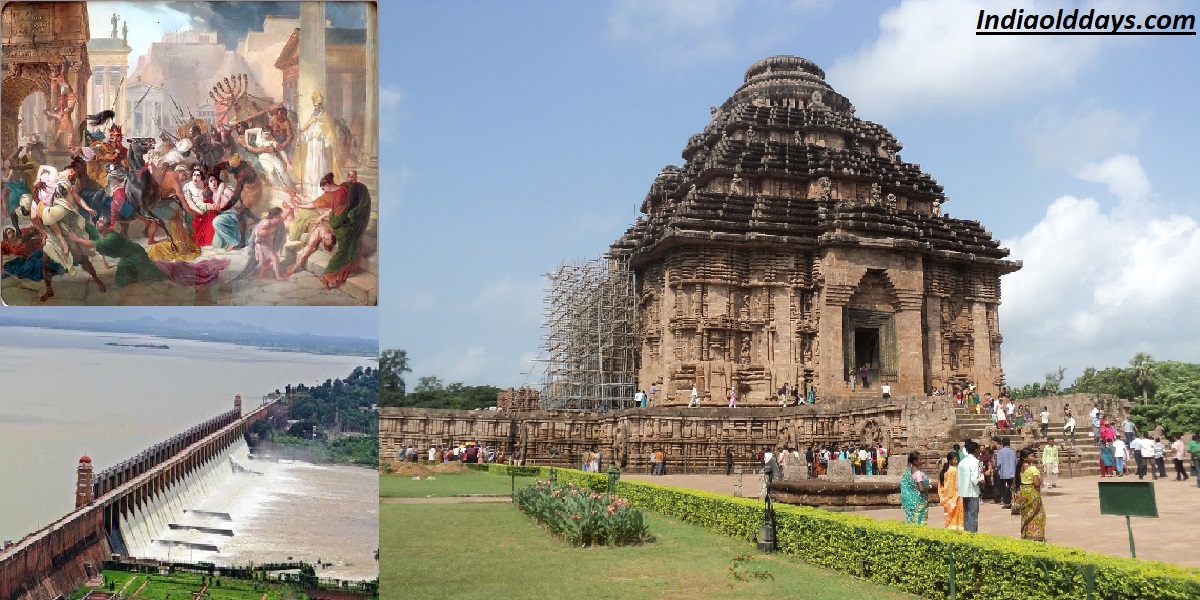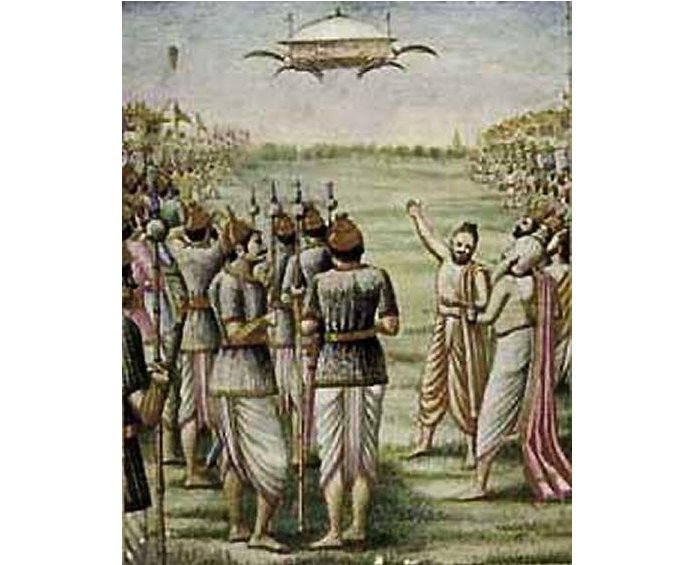Uttarvedic Period
Uttarvedic Period (1000-600 B.C.)-
The period after the Rigvedic period is called Uttarvedic period.
In the period of Indian history in which Samveda, Yajurveda, and Atharvaveda and Brahmin texts, Aranyakas was created, is called the Uttar vedic period.
Source- Painted Dhuser Mradbhand, Iron Equipment.
Archaeological Sources-
- Atranjikhera– The first and most of the iron tools have been obtained from Atranjikhera. These iron tools provide us with information about the Uttarvedic period.
Literary sources-
- Samaveda – In this Rigvedic mantras have been made to sing.
- Yajurveda– In this Veda, the methods of Yajna are described, it is ritualistic treatise.
- Atharva Veda– It is also related to Arya culture as well as non-Arya culture. Therefore, this Vedas do not get the same importance as the former three Vedas and it has not been included in the Vedatrayi.
- Brahmin texts– These mention the ritualistic significance of the yajnas. This is a ritualistic texts. The four Vedas have different Brahmanical texts.
- Aaranyak-They were composed in seclusion (aranya-jungle) and they were also studied in solitude.
- Upanishad – In the Upanishads, the relationship between God and Spirit have been discussed, such as Paramagyan, Paramvidya, Supreme Knowledge, that is; the talk out of this world. Upanishad is the basic source of Indian philosophy. The composition of the Upanishads started from this period and lasted till the medieval period.
Vedatrayi-
Rigveda, Samved, Yajurveda, these three Vedas together have been called Vedatrayi.
Features of the Uttarvedic period-
- Political expansion
- Economy
- Religious system
- Industry
- social status
- 16 sacraments
Political expansion-
In this period, the expansion of the Aryan till eastern Uttar Pradesh and Bihar (expansion from river Sadanira to river Gandak) and in the south till Vidarbha (MP).
Economy-
As well as animal husbandry, agriculture also became the main profession. Many evidence has been received such as the Shathpath Brahmana describes all the actions related to agriculture. Atharvaveda has been told that Prithvivan cultivated first.
The number of grains also increased in this period. In addition to barley, there is evidence of godhoom (wheat), breehi / tundal (rice), Udad, lentil, sesame, and sugarcane. Indra has been called Sunasir (Halwaha). In Kath / Kathak Samhita, 24 bulls were used to plow.
Sustainable life based on Agricultural began. But the agricultural surplus was still not being produced (Subsistence agriculture) because in agriculture still wood, stone, copper, and bronze tools were used. At this time only the importance of agriculture was increased. Slaves were not employed in agricultural work. (The owner of the land was associated with agricultural activities.) In the Taittriya Upanishad, the food is said to be Brahm and in Yajurveda, Hull is said to be Seer.
Keeping elephants pet, began as animal husbandry and it became a business. Shatpath Brahmin provides information about Gardabh (donkey) and sukar (pig) as a pet animal. Gardabh was the vehicle of Ashwin deities.
The people of the Uttarvedic period were familiar with 4 types of utensils (mrdabhandas) – 1. Black and red utensils 2. utensils of black color 3. Painted dhuser mrdabhandas 4. Red utensils. Among the people of this period, red mrdabhandas was the most prevalent, whereas the painted dhuser mrdabhandas was the characteristic of this era. The people of the Vedic period used the metal, that would be the copper first.
Religious system-
During this period the yajna and rituals became prominant in the method of worship. However, even in this era, Arya used to offer yajnas and prayers to the gods to fulfill their wish of material pleasures. Rituals were increased in yajnas and emphasis given on pure pronunciation of mantras. In yajnas, large quantities of animal sacrifices were offered. The Vaishya were dissatisfied with it.
Industry-
Apart from agriculture, different types of crafts have also emerged.Details of these various occupations are found in the Purushamedha Sukta. Among which metal purifiers, chariots, carpenters, tanners, goldsmiths, potters, traders, etc. were prominent.
Textile manufacture, metal utensils, and weapon making, knitting, barber(vapata), rope (rope-maker) Iron workman, yarn (charioteer), etc. smaller industries were in vogue.
Brahmin texts also mention Superior. Superior was the principal trader of the category. The business used to complete by Prapan, in which the means of the transaction was of cow and Nishk. The Shatmaan was the currency of silver. It is described as Dakshina in the Sathapath Brahmin.
Atharva Veda mentions silver. The Sathapatha Brahmin first mentions Mahajani system and the Sudakhor has been called Kusidin. The word kusid is found in the Taittiriya Samhita for loan.
The currency was prevalent in the Uttarvedic period even though the transaction and trade were done by commodity exchange. The original unit of watt was Krishnal. The unit of weighing was Rattika and Gunjah.
Nishk, Shatmaan, Paad, Krishnal, etc. were the separate units of measure. There is also evidence of sea trade. Uttarvedic literature gives information about the PUR. PUR does not mean the city. PUR means the fort or the village. Tattriya Brahmin gets the word city. City – Aadhya Nagar. That is, the Uttarvedic period was rural society, not urban.
Social Status-
The society of Uttarvedic period was divided into four caste – Brahmin, Rajanya (Kshatriya), Vaishya, Shudra. In this period, the ritual of Yajna had increased, so that the power of the Brahmins increased greatly. The caste system was based on caste, not on work(karma) and the castes became rigors.
Tri Rin-Dev Rin,Pitra Rin,Rishi Rin.
Five great yajnas- Dev yajna, Pitra yajna, Rishi yajna, Bhoot yajna, Nra yajna.
16 Sanskar-
Conception, Punsvan, caste-work, Nishkraman, Annaprasan, chudaakarma, Karn-vedh, vidya-arambh, Upnayan, Keshant / Godan, Samavartan, marriage, Funeral.
Reference : https://www.indiaolddays.com/




